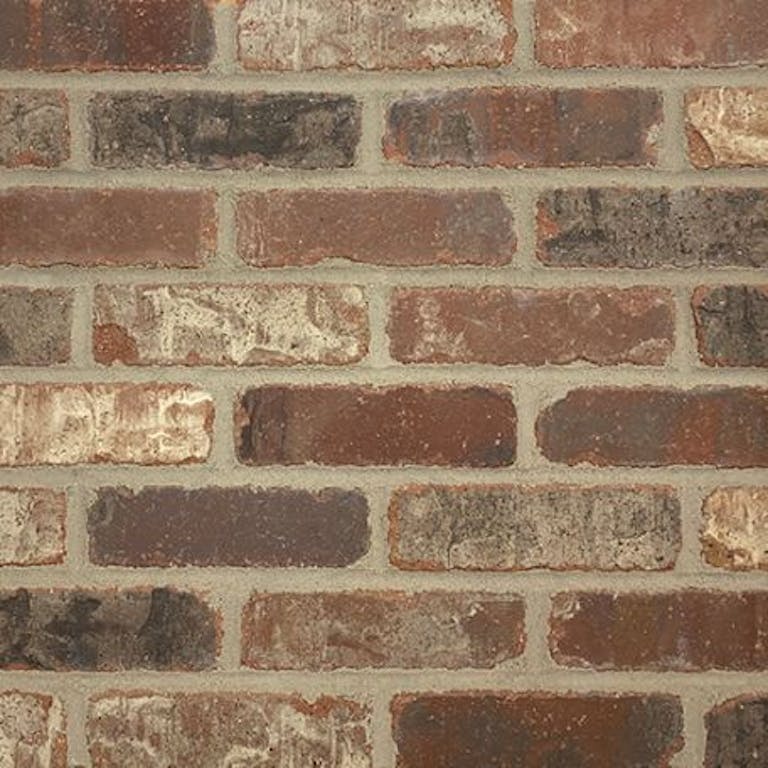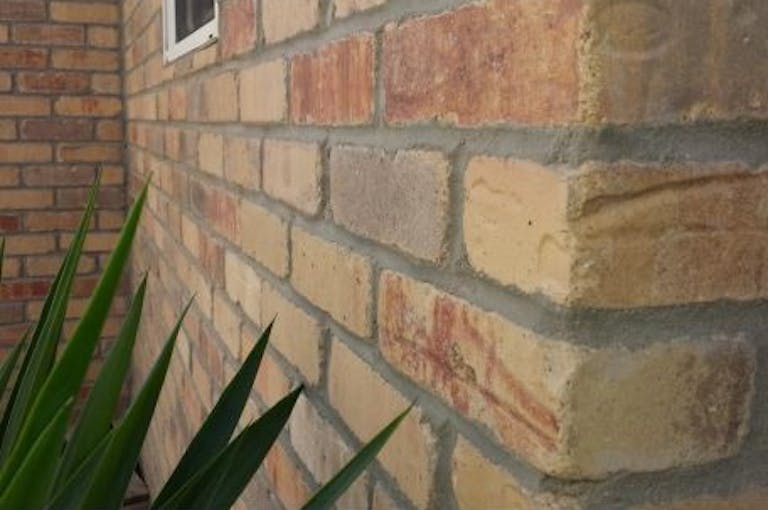Old Mill Brick is a manufacturer of thin brick and veneer installation systems. Their systems utilize thinly cut brick to reduce weight and cost while also making the installation process as easy as possible. And despite the reduced thickness and weight, Old Mill Brick’s thin brick veneer still features the same durability and appearance as full-thickness brick.
What is Brickwebb?

Brickwebb by Old Mill Brick is a mesh-backed, thin brick product created for the easy installation of beautiful, brick veneer. The system can be adhered to almost any surface, both interior and exterior. And, Brickwebb mesh is made out of durable, fire-resistant fiberglass, so it’s safe to use in any construction.
The concept is simple: Brickwebb is a sheet of mesh with thin brick veneer pre-attached so you can maintain even and straight spacing between bricks when applying the system to walls. The sheets themselves also fit perfectly together, to make installation even quicker and easier. But, if you do need to customize sheet sizes, such as for when your veneer is approaching a corner, the mesh sheets can be easily cut to any size.
Brickwebb Features
Brick Colors
When it comes to color selection, Brickwebb has something for everyone and every project. There are 30 unique color options for Brickwebb bricks. These color options fall into two categories: tumbled brick and straight edge. Tumbled brick has a worn and weathered appearance while straight edge has a smooth surface finish. The available colors are as follows:
| Alamo Sunrise | Castle Gate | Dixie Clay |
| Rushmore | Boston Mill | Columbia Street |
| Hanoi Wirecut | Brisbane | Independence |
| Promontory | Pony Express | Cordova |
| Seattle | Colombo | Nairobi |
| Atlanta | Santiago | Manhattan |
| Café Mocha | Little Cottonwood | Stockholm |
| Manchester | Kokkini Beach | River Silt |
| Rustic Iron | Toronto | Cairo |
| Ocean Coral | Sunset Red | Shanghai |
Brick Layouts

Along with the 30 colors of brick, there are four main Brickwebb layout types. These are sheets, herringbone, corners, and singles. Brickwebb Sheets are the standard layout in which the bricks are laid in horizontal rows just as you would typically see on a brick wall. Herringbone is the same concept, but with the bricks laid out in a herringbone pattern instead of a horizontal one. Corners are a special layout designed specifically to wrap around wall corners. The bricks on Corners are laid out in the same horizontal pattern as on Sheets. Finally, Singles are exactly what they sound like — single bricks not attached to the Brickwebb mesh system. These bricks are used to fill any gaps.
Durability Features
Brickwebb is able to resist 2,000 lbs. of pulling force and 8,000 lbs. of compressing force per brick, making it 2.5 to 3 times stronger than concrete or cast brick. Thin brick veneer also absorbs 50% less moisture than concrete or cast brick, making it more resistant to moisture and freezing/thawing cycles.
How to Install Brickwebb
The three main steps to installing Brickwebb are measuring and preparing, placing corners and flats, and adding mortar or grout.
Measuring and Preparing
Start by measuring the wall space to determine how many square feet of Brickwebb you need. Once you have the space measured, it’s time to prepare the wall. If it’s an interior wall, begin by removing the baseboards. Next, lay plastic down to protect the flooring. Then, remove any outlet covers or other objects attached to the wall. Tape over the exposed outlets to prevent damage. Finally, if the wall is painted, rough up the surface with sandpaper and brush away any excess dust with a towel for better adhesion.
Placing Corners and Flats

Apply your mixed adhesive to four-square-foot sections of the wall at a time. By limiting the amount of space you are applying your adhesive to, you will prevent it from drying before you attach the Brickwebb to it. You should start by attaching corners to your wall first, then work your way out from the corners by applying the flats. In some circumstances, you will need to cut the Brickwebb to create openings for outlets or light switches. Finally, install single bricks to fill in the gaps wherever necessary.
Adding Mortar or Grout
Adding mortar or grout is the last thing you need to do before your Brickwebb installation is complete. First, mix your mortar or grout. Then, apply it between the bricks and scrape away the excess while it is still malleable. Finally, brush the entire wall to remove leftover dust and grout after all the gaps are filled. Leftover dust and grout can affect the color of your bricks, so it is important not to skip this step.
Conclusion
The Brickwebb system is a thin brick veneer on a mesh backing created by Old Mill Brick. It is used to make the process of adding brick veneer to walls easier and more cost-efficient. However, when you choose Brickwebb, you don’t need to sacrifice style for ease of installation. With 30 brick colors to choose from, there’s a style for every project. Once it comes time to install the bricks, the simple, three-step process involves preparing the wall, adhering the mesh with bricks attached, and filling in the gaps with mortar or grout.
Fizzano Brothers
Fizzano Brothers Concrete is your local Brickwebb distributor. Contact us today for more information on the available colors of brick and any additional information you need. With Brickwebb, your project is guaranteed to look great and stand the test of time.

